Table of Contents
Safi Al Din (Safi Ad Din), born in 1253 in Ardabil, Iran, left a lasting mark as the founder of the Safavi order and a key figure in shaping the Safavid dynasty. Growing up in a family of local leaders, he learned in Ardabil and later explored Sufi teachings in Shiraz.
His quest deepened in Gilan, where he spent 25 transformative years under Sheikh Zahid’s guidance, marrying his daughter, Bibi Fatimah. Amidst succession disputes, he returned to Ardabil, laying the foundation of the Safavi order.
Safi Al Din’s teachings attracted followers, drawn by his message of boundless hospitality. Dubbed Khalil-e Ajam, he embodied the spirit of Iranian hospitality. Despite its roots in Sunni beliefs, the order embraced diverse spiritual paths, including veneration of Ali. Despite later attempts to pigeonhole him, his legacy remains a beacon of unity.
Sheikh Safi Al Din Khanegah and Shrine Ensemble
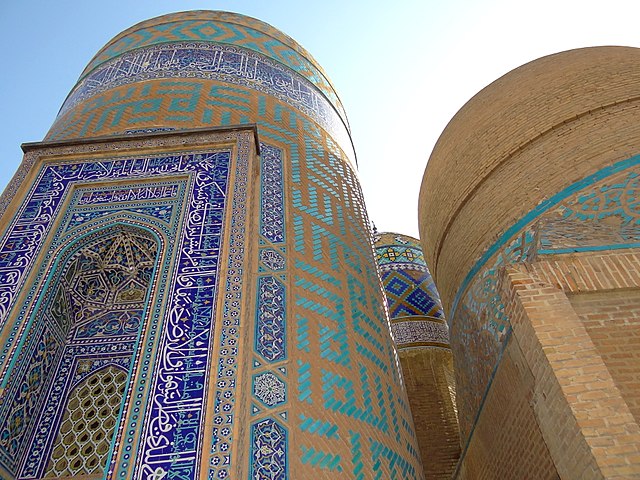
Situated amidst Ardabil’s historical landscape, the Sheikh Safi Al Din Iran Khanegah and Shrine Ensemble stands tall as a testament to Iran’s rich architectural legacy. Its imposing presence showcases the intricate artistry of the eighth-century AH, with elaborate tiling and masterful architecture. Built by Sadr Al Din Musa after his father Sheikh Safi’s passing in 735 AH, the complex underwent significant expansions and enhancements during Shah Abbas’s reign, solidifying its prominence.
Beyond its architectural magnificence, the ensemble holds deep ties to Iran’s Safavid dynasty, embodying its cultural essence. Recognized as one of Iran’s top historical sites, it was honored by UNESCO in 2010 as the 11th valuable monument. At its core lies the revered Sheikh Safi Al Din Ardabili, a mystic and Sufi sect founder. Born in Ardabil in 650 AH, his teachings transcend language, evident in his Turkish writings. Sheikh Safi’s roots in Ardabil’s agricultural landscape highlight the humility that defines his spiritual journey and the enduring legacy of his shrine complex.
History of Sheikh Safi Al Din Khanegah and Shrine Ensemble
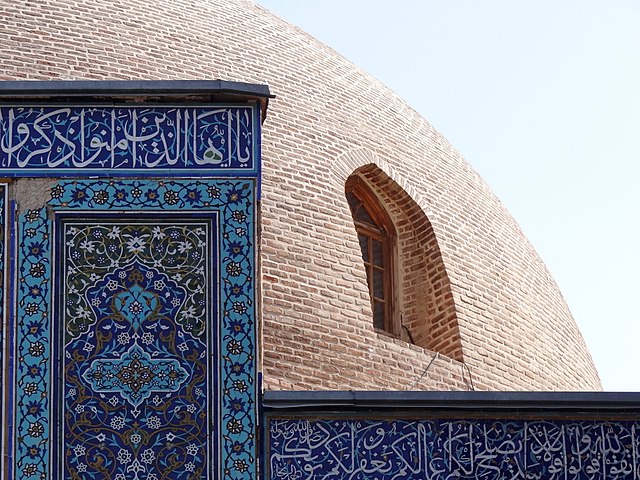
The spiritual sanctuary of Sheikh Safi Al Din Iran Khanegah and Shrine Ensemble is a place steeped in Iranian tradition and deep spiritual devotion. As one of Iran’s UNESCO World Heritage Sites, this sanctuary, known as a Khanqah, is more than just a building; it’s a haven for those seeking inner peace and understanding.
At the heart of this sanctuary lies the mausoleum, where Sheikh Safi Al Din rests in eternal peace. Here, visitors are greeted by a sense of reverence and tranquility, surrounded by the fragrance of incense and the soft murmur of prayers. Above the mausoleum stands the striking Allah-Allah tower, its turquoise tiles forming the sacred name of Allah. This tower serves as a symbol of divine presence, guiding seekers on their journey towards enlightenment and spiritual fulfillment. Within the walls of Sheikh Safi Al Din Khanegah and Shrine Ensemble, visitors embark on a journey of self-discovery and inner reflection, embracing the timeless wisdom of Sufi tradition.
The Architecture of Sheikh Safi Al Din Khanegah and Shrine Ensemble
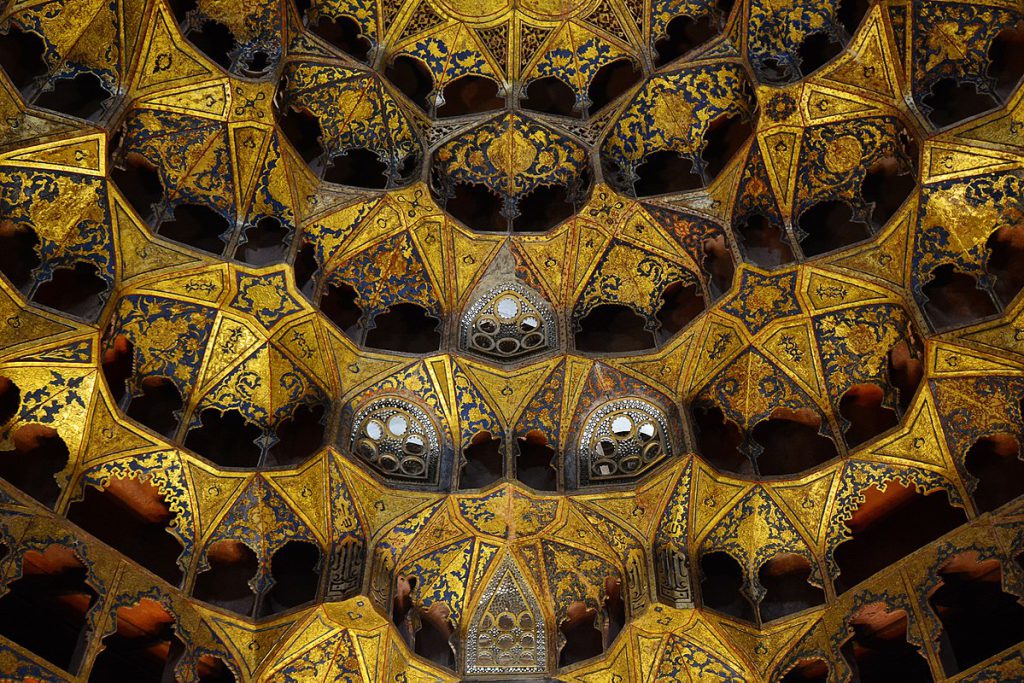
In the eastern part of Aali Qapo Square sits the entrance to the revered tomb of Sheikh Safi Al Din Ardabili. It’s a round tower topped with a small dome, crowned by an elegant box underneath which lies an inscription in graceful Raqa script, telling stories of mysticism and wisdom. This tomb isn’t just a place of rest; it’s a showcase of artistry and spirituality.
Step inside, and you’ll be greeted by a stunning display of craftsmanship. Intricate tiling, dazzling mosaics, and delicate Mogharnas adorn every corner, reflecting the skilled hands of Safavid-era artists. The walls whisper tales of the past through elaborate calligraphy and inscriptions, while silver accents and golden hues add a touch of grandeur to the space.
Amidst this splendor, the Ardabil Carpet steals the show. Known worldwide for its intricate design, this carpet is a proud symbol of Iranian artistry. Displayed in London’s Victoria & Albert Museum, it’s a testament to the enduring legacy of Persian craftsmanship. Within the tomb of Sheikh Safi Al Din Ardabili, history and beauty intertwine, inviting visitors to delve into the rich cultural heritage of Iran.
Different Parts of Sheikh Safi Al Din Khanegah and Shrine Ensemble
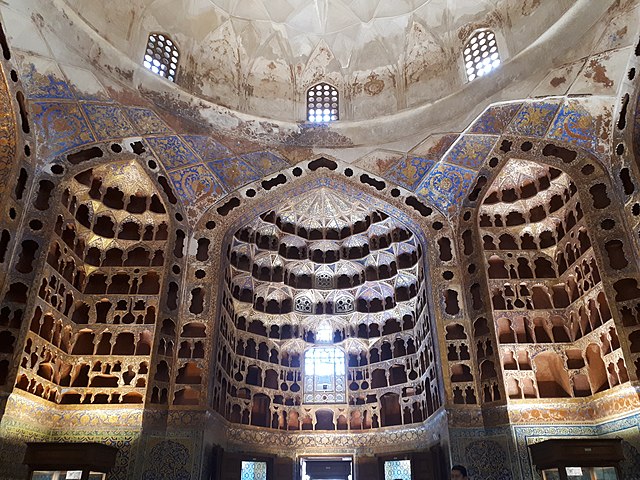
Jannat Sara
In the main courtyard’s northern corner stands Jannat Sara, a place of royal grandeur. It boasts a large porch with a striking wooden lattice door, inviting visitors into a world of opulence. Inside lies the royal residence, with another door leading to the domed marvel of Jannat Sara. While its beginnings are unclear, the building has seen many changes over time.
Once crowned by a Qajar-era roof, Jannat Sara’s splendor faded over the years. But recent efforts have restored its glory, with artisans crafting a new brick dome. Now, Jannat Sara stands as a majestic symbol of the past, whispering tales of ancient royalty.
Qandil Khaneh
Qandil Khaneh, a rectangular chamber, echoes with Quranic recitations. Built by Shah Tahmasb I, it’s more than just a room—it’s a blend of faith and art. Inside, a carpet with 33 million knots once adorned the floor, showcasing the Safavid dynasty’s craftsmanship. Despite earthquakes and time’s toll, Qandil Khaneh endures, a testament to resilience amid history’s chaos.
Its simple rectangular layout belies its profound significance as a space for prayer and contemplation. The legacy of Shah Tahmasb I lives on within these walls, where devotees once gathered to seek solace and enlightenment. Despite the passage of centuries, the spirit of Qandil Khaneh remains undimmed, a beacon of faith amidst the ebb and flow of history.
Porcelain House
Among the remarkable structures of the Sheikh Safi complex stands the Porcelain House, a precious relic of history. Thought to be one of the oldest buildings here, it likely predates Jannat Sara and Qandil Khaneh. Originally a gathering spot for dervishes, it underwent changes during Shah Abbas I’s reign, becoming a storehouse for valuable books, treasures, and royal porcelain.
Crafted by skilled artisans commissioned by Shah Abbas I, these porcelain dishes reflect a time of luxury and cultural fusion. Each piece, marked with the royal seal and a dedication to Sheikh Safi, symbolizes the blend of Persian and Chinese craftsmanship. As the Porcelain House endures through time, its unique octagonal shape and towering dome stand as reminders of Iran’s rich past and enduring heritage.
Tomb of King Ismail
At the heart of the Sheikh Safi complex lies the Tomb of King Ismail, a serene tribute to the revered ruler. This small room, crowned by a brick dome supported by four pillars, emanates an aura of reverence. Adorned with intricate paintings of flowers and foliage, the walls and ceiling showcase skilled craftsmanship and artistic dedication.
Outside, a tall cylindrical tower stands proudly, adorned with vibrant tiles depicting symbols of King Ismail’s reign. At its peak, five swords stand as symbols of the tribes that supported him. Visitors paying homage to this esteemed monarch are enveloped in a sense of history and legacy that transcends time.
Allah Allah Dome
At the heart of the Sheikh Safi complex stands the Allah Allah Dome, an architectural marvel steeped in spiritual significance. Built by Sadr al-Din Musa, its turquoise-tiled exterior bears the repeated inscription of “Allah,” a testament to unwavering devotion. The intricate brickwork decorating the dome and stem echoes this divine dedication with repeated rhombus patterns.
Though time may have weathered its exterior, the allure of the Allah Allah Dome remains undiminished. Once the main entrance to the tomb, its southern portal now stands as a silent guardian, preserving the sanctity within. As visitors step through its threshold, they enter a realm where faith and beauty intertwine, offering solace and inspiration to all who seek it.
FAQs about Safi Al Din
Q1: What religion did Safi Al Din observe?
A1: The group led by Safi al-Din originally followed the Shafi’i branch of Sunni Islam, but later some people said they were actually Shi’i.
Q2: What did Safi do?
A2: Safi became king on January 28, 1629, when he was eighteen years old. He got rid of anyone he saw as a challenge to his rule, killing most of the Safavid royal princes along with important court members and military leaders.
Q3: What is the meaning of the name Safi Al Din?
A3: Safi’s name might be spelled differently, like Safi-ad-din, Safiuddin, or Safieddine. The name comes from two Arabic parts: “Safi” meaning pure and “Al-Din” meaning religion. This term could refer to Safi al-Din al-Urmawi, who was a Persian musician and writer, born around 1216 and passing away in 1294.
Q4: Was Safi Al Din the founder of the Safavid Empire?
A4: Safi al-Din was born in Ardabil, Iran, in 1253 and passed away on September 12, 1334, in Ardabil as well. He was a mystic who founded the Safavi order of mystics, which later led to the establishment of the Safavid dynasty.
Q5: Was Safavid Sunni or Shia?
A5: Shortly after the Safavids gained control, they made Twelver Shiism, the biggest branch of Shia Islam, the official religion of their dynasty. This set them apart from their neighboring rivals, the Ottomans in Turkey to the west, and the Mughals in India to the east.
Last Words: Explore Sheikh Safi Al Din Khanegah and Shrine Ensemble with a Customized Tour
In Ardabil, there’s a special old building called the Sheikh Safi Al Din Khanegah and Shrine Ensemble. It’s important because it’s a symbol of Iran’s history. It was made by a man named Sadr Al Din Musa after his dad, Sheikh Safi, died. Later, during Shah Abbas’s time, it got even bigger. This place is special because it’s connected to the Safavid dynasty, which was important in Iran’s past.
When planning a trip to Iran to explore the beauty of the Sheikh Safi Al Din Khanegah and Shrine Ensemble, it’s best to go with customized tours. This UNESCO World Heritage Site is a treasure trove of Iran’s cultural history, featuring stunning architecture and deep spiritual significance. Enter To Iran Tour, your gateway to unforgettable experiences in Iran. Our team specializes in creating Iran Tours that match your interests, preferences, and pace. Whether you love history, photography, or food, we design each part of your trip with careful attention.
Reach out to us today and let’s create memories together that will last a lifetime.

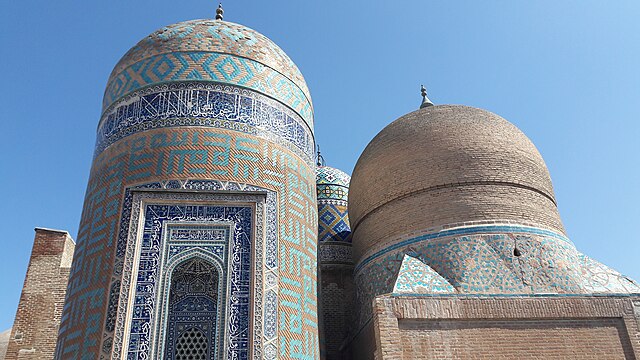
It’s hard to find educated
people on this topic, however, you sound like you know what you’re talking about!
Thanks